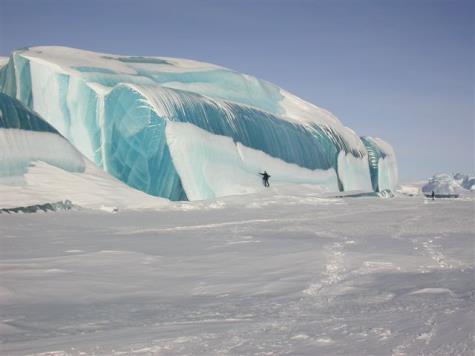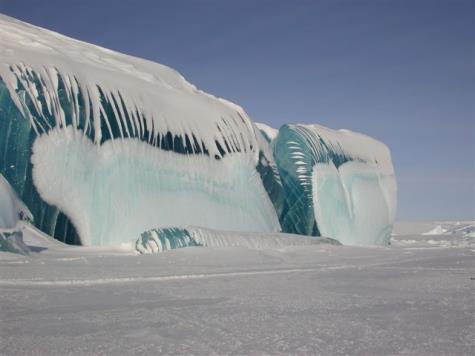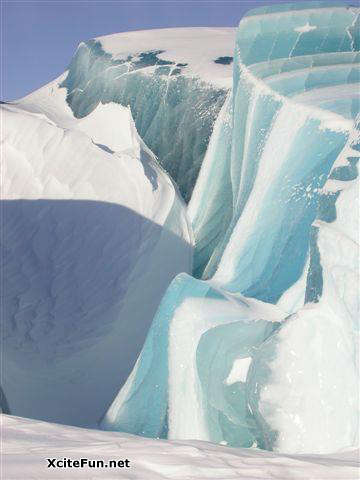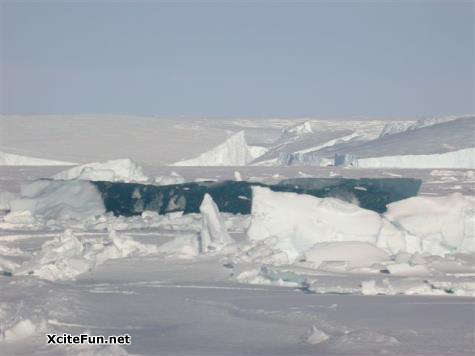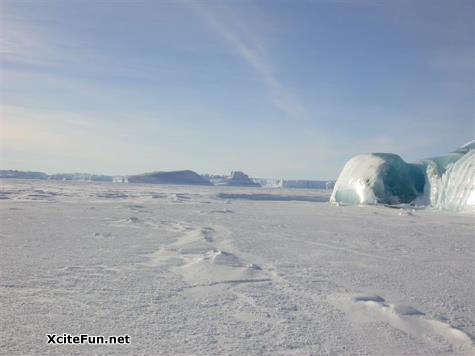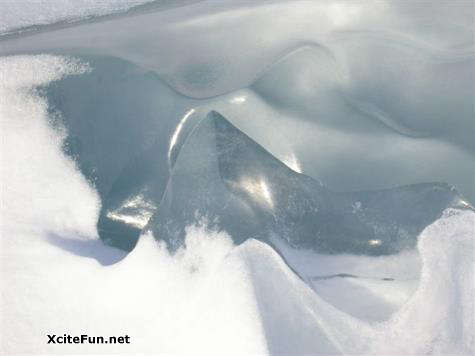
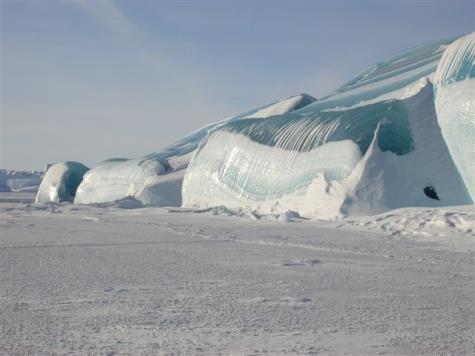
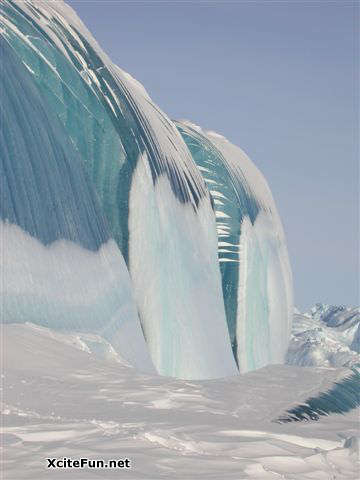

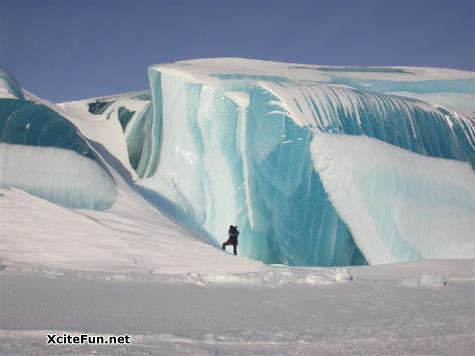
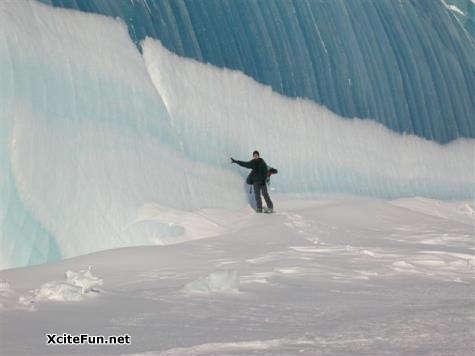

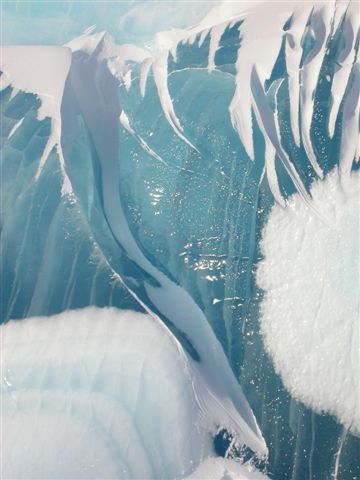
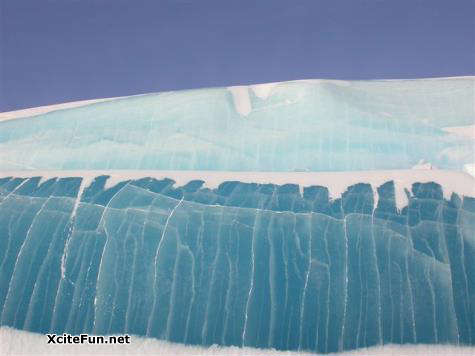

Glacier ice is the largest reservoir of fresh water on Earth, and second only to oceans as the largest reservoir of total water. Glaciers cover vast areas of polar regions but are restricted to the highest mountains in the tropics.
Many geomorphological processes are interrupted or modified significantly by glaciers. Geomorphological features created by glaciers include end, lateral, ground and medial moraines that form from glacially transported rocks and debris; U-shaped valleys and cirques at their heads, and the glacier fringe, which is the area where the glacier has recently melted into water. Much precipitation becomes trapped in the glaciers instead of flowing immediately back to the oceans, causing sea level drops and greatly modifying the hydrology of streams. The Earth's crust is pushed down by the weight of the ice, and meltwater commonly collects and forms lakes along the ice margins.
Glacial epochs have come and gone repeatedly over the last million years. Presently, Earth is in a relatively warm period, called an interglacial, exacerbated by global warming with the resulting retreat of the glaciers. The Earth has been cyclically plunged into cold episodes, however, called glacials, in which the extent of glaciers is expanded, colloquially referred to as ice ages.
